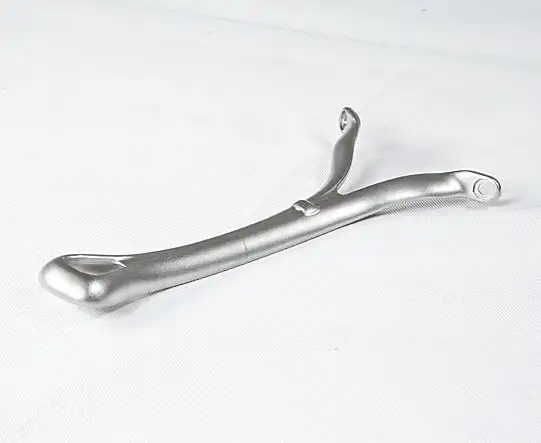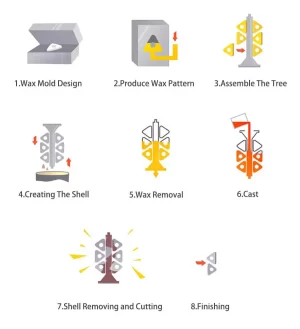Stainless Steel Investment Casting: A Comprehensive Overview
Stainless steel investment casting, also known as lost-wax casting, has emerged as a cornerstone of modern precision manufacturing. This process is renowned for its ability to produce complex, high-precision components with excellent surface finishes and material versatility. Below, we explore the key aspects of stainless steel investment casting, including its advantages, applications, and the standardized production process.
Advantages of Stainless Steel Investment Casting
- High Precision and Surface Finish
Investment casting achieves micron-level accuracy, making it ideal for intricate geometries such as turbine blades or medical implants. Unlike sand casting (CT10–13 tolerance) or die casting (CT5–7), investment casting delivers CT4–6 precision, minimizing post-processing needs. The process results in a smooth, high-quality surface finish, reducing the need for additional machining or finishing processes.
- Material Versatility
Stainless steel investment casting is compatible with a wide range of stainless steel grades, each offering different properties to suit specific applications. This adaptability is critical for aerospace and medical industries requiring corrosion-resistant components. The process can accommodate a wide variety of stainless steel alloys, each with unique properties that can be leveraged for specific applications.
- Reduced Waste and Environmental Impact
Automated wax injection and reusable ceramic molds lower material waste. Compared to sand casting, which generates significant sand residue, investment casting recycles 90% of wax and uses eco-friendly binders, aligning with sustainability goals.
- Efficiency in Complex Designs
The process eliminates parting lines, enabling seamless hollow structures and thin-walled parts (as thin as 0.5mm). This contrasts with die casting, which struggles with ultra-thin sections due to high-pressure limitations. Investment casting can produce components with complex geometries, including internal cavities, thin walls, and intricate curves, that would be difficult or impossible with other casting techniques.
Applications of Stainless Steel Investment Casting
Stainless steel investment casting is utilized across a broad spectrum of industries due to its precision, durability, and material versatility. Key applications include:
– Aerospace: High-precision components such as turbine blades and engine parts, where dimensional accuracy and material strength are critical.
– Medical: Implants, surgical instruments, and medical devices that require biocompatibility and corrosion resistance.
– Automotive: High-performance parts like exhaust components and engine parts, where durability and precision are essential.
– Food Processing: Equipment components that must meet stringent hygiene standards, benefiting from the smooth surface finish of investment casting.
– Marine: Components exposed to saltwater, such as propellers and engine parts, which require high corrosion resistance.
Standardized Production Process of Stainless Steel Investment Casting

- Wax Pattern Creation
The process begins with the creation of a wax pattern using injection molding. These patterns are highly detailed and can replicate complex geometries with precision.
- Ceramic Shell Formation
The wax patterns are then coated with a ceramic shell. This shell is built up in multiple layers to ensure strength and precision. Once the shell is dry, it forms a durable mold.
- Wax Removal
The ceramic shell is heated to melt out the wax, leaving a hollow mold that retains the intricate details of the original wax pattern.
- Stainless Steel Pouring
Molten stainless steel is poured into the ceramic mold. The steel fills the mold, taking on the exact shape of the original wax pattern.
- Cooling and Solidification
The stainless steel is allowed to cool and solidify within the mold. Once solid, the ceramic shell is removed, revealing the finished casting.
- Post-Processing
Depending on the application, the cast part may undergo additional processes such as heat treatment, machining, or surface finishing to meet specific requirements.
Conclusion
Stainless steel investment casting stands out as a highly precise, versatile, and efficient manufacturing process. Its ability to produce complex components with high dimensional accuracy and excellent surface finishes makes it an ideal choice for industries demanding high performance and reliability. As technology continues to advance, stainless steel investment casting is poised to play an even more significant role in precision manufacturing.
Relative links:
Link to this article:Stainless Steel Investment Casting: A Comprehensive Overview
Reprint Statement: If there are no special instructions, all articles on this site are original. Please indicate the source for reprinting.:ODM Wiki,thanks!^^